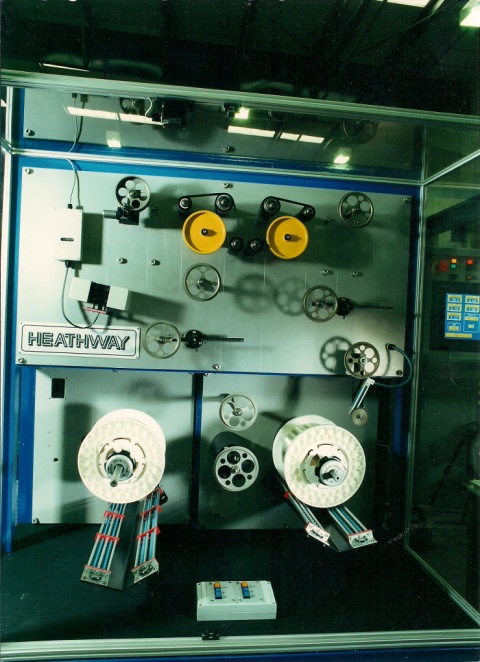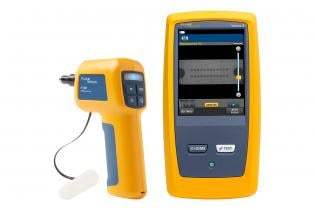FAQs about fibre testing equipment in fiber optic maintenance
Wiki Article
Discovering the Impact of Robotic Vision on Modern Production Techniques and Quality Assurance
Robotic vision modern technology is changing the landscape of contemporary manufacturing and high quality control. By integrating innovative imaging systems and expert system, makers can accomplish extraordinary degrees of accuracy and efficiency. This change not only enhances production procedures but also addresses vital difficulties in keeping item requirements. As markets increasingly depend on these technologies, the implications for future manufacturing practices stay to be completely discovered. What will this imply for the competitive characteristics of the marketplace?Understanding Robotic Vision Innovation
Robotic vision technology acts as the backbone of automation in contemporary manufacturing. It includes making use of video cameras, sensing units, and expert system to enable robots to analyze and react to aesthetic details from their atmosphere. This technology permits robotics to determine, situate, and review items, making them with the ability of executing complicated tasks such as setting up, evaluation, and material handling with precision. The integration of equipment learning algorithms further enhances the capacity of robotic vision systems, allowing them to adapt to differing conditions and boost in time. By refining pictures and information in real-time, robotic vision systems can help with much faster decision-making and reduce errors in producing procedures (optical fibre diameter analyser). This technology not only boosts operational efficiency however also ensures that top quality standards are fulfilled constantly. As the production landscape remains to develop, comprehending the complexities of robotic vision innovation comes to be crucial for leveraging its possible completelyBenefits of Robotic Vision in Production
Robotic vision modern technology uses significant advantages in manufacturing by improving precision and precision in jobs such as high quality control and assembly. This increased degree of information warranties that products meet rigid criteria, decreasing waste and revamp. In addition, the combination of robot vision can lead to increased manufacturing effectiveness, enabling producers to optimize their processes and achieve higher outcome rates.Boosted Precision and Accuracy
In modern production, enhanced precision and accuracy are critical for optimizing manufacturing procedures and ensuring item high quality. Robotic vision systems enable machines to carry out complicated jobs with remarkable consistency. These systems use innovative imaging modern technologies to spot minute details and variations in materials, components, and finished products. By evaluating visual data in real-time, robot vision substantially decreases human mistake, resulting in less issues and better criteria. In addition, improved precision in measurements and placing facilitates much better placement in assembly processes, which is vital for complex designs. Inevitably, the integration of robotic vision not just reinforces the integrity of producing outputs but additionally fosters confidence amongst customers regarding item stability and efficiency. This accuracy is crucial in industries where top quality is critical.Increased Production Effectiveness

Manufacturers are significantly transforming to vision systems to increase manufacturing efficiency across different procedures. These advanced systems allow real-time assessment and tracking, considerably lowering downtime triggered by errors or defects. By integrating robot vision, companies can automate quality assurance, enabling for faster recognition of problems and minimizing the need for human intervention. This brings about streamlined workflows, as robots can quickly adapt to changes in manufacturing demands without sacrificing precision. Vision systems assist in much better supply administration by precisely tracking elements and products, ensuring suitable source utilization. Ultimately, the fostering of robot vision not only boosts effectiveness however also adds to higher output rates, decreased operational prices, and boosted total efficiency in the manufacturing industry.
Enhancing Quality Control Processes
Robotic vision technology considerably improves quality assurance processes in production by using accuracy examination methods. These innovative systems facilitate real-time defect discovery, making certain that products fulfill stringent quality requirements. Consequently, manufacturers can minimize waste and enhance total performance.Accuracy Examination Techniques
Precision evaluation strategies have reinvented high quality control processes in production, allowing the discovery of min problems that conventional approaches could forget. These methods utilize progressed imaging modern technologies, such as high-resolution video cameras and laser scanning, to accomplish exceptional accuracy. By using robot vision systems, suppliers can automate evaluation jobs, making certain constant efficiency and reducing human mistake. The assimilation of maker knowing formulas furthermore boosts these systems, allowing them to adjust and improve with time. Additionally, accuracy evaluation facilitates the recognition of subtle variants in item measurements and surface area coatings, which can significantly affect overall item high quality. Because of this, manufacturers can apply corrective actions a lot more swiftly, eventually bring about reduced waste and improved customer fulfillment.Real-Time Flaw Detection
Harnessing advanced imaging innovations, real-time problem detection changes quality assurance procedures in manufacturing. By incorporating high-resolution video cameras and sophisticated algorithms, producers can swiftly identify abnormalities during production. This modern technology assists in instant rehabilitative activities, decreasing waste and improving total effectiveness. Real-time systems examine items as they move along the setting up line, ensuring that defects are found and attended to right away production timetables. In addition, the application of machine knowing boosts the precision of these systems, allowing them to adjust to new problem patterns over time. Manufacturers profit from boosted item high quality and decreased operational prices. Ultimately, real-time problem discovery not just improves procedures but also promotes a culture of continuous renovation in modern-day production environments.Real-Time Data Analysis and Decision Making
In the vibrant landscape of production, real-time information analysis equips systems to make swift, informed choices. By leveraging innovative robotic vision technologies, makers can gather and process large quantities of information immediately. These systems analyze aesthetic inputs to keep an eye on production procedures, making certain that any kind of deviations from quality criteria are discovered and addressed immediately. Producers can enhance link operations by reapportioning sources and adjusting workflows based on real-time understandings.The combination of information analytics enables for predictive maintenance, where possible equipment failings are anticipated prior to they disrupt production. This positive strategy reduces downtime and boosts total performance. optical fibre diameter analyser. The ability to make website here data-driven decisions in real time substantially reduces waste and improves product quality, permitting manufacturers to reply to market demands swiftly. Consequently, real-time data analysis not just improves production but additionally cultivates a culture of continual renovation in modern-day manufacturing environments
Challenges in Carrying Out Robotic Vision Solutions
Executing robot vision systems in producing presents a range of difficulties that can impede their effectiveness. One significant barrier is the intricacy of incorporating these systems with existing equipment and process. Suppliers commonly face compatibility concerns with legacy equipment, leading to enhanced costs and downtime. In addition, the irregularity in product forms, sizes, and products can complicate the calibration of vision systems, requiring extensive training and fine-tuning.One more challenge depends on processing big quantities of aesthetic data in actual time. High-performance computing resources are vital, which might call for more financial investment in framework. There is a lack of experienced workers capable of taking care of and keeping these innovative systems, leading to possible functional inefficiencies. Lastly, making sure the dependability and precision of robot vision systems under varying ecological conditions postures a continual difficulty. Addressing these concerns is vital for maximizing the potential advantages of robotic vision in manufacturing.
Future Patterns in Robotic Vision for Production
As innovations in fabricated intelligence and artificial intelligence continue to develop, the future of robot vision in manufacturing shows up progressively encouraging. Emerging fads show a shift towards much more sophisticated imaging technologies, such as 3D vision systems and hyperspectral imaging, which will improve accuracy in high quality control procedures. Assimilation with the Internet of Things (IoT) will allow real-time data evaluation, permitting robotic systems to adjust promptly to adjustments in the production setting. Additionally, the advancement of collaborative robots (cobots) outfitted with sophisticated vision abilities is expected important site to assist in smooth human-robot interactions, boosting performance and safety on the factory floor. Furthermore, the unification of edge computing will certainly equip robot vision systems to refine data locally, reducing latency and enabling faster decision-making. These technologies will not just improve manufacturing procedures yet likewise substantially enhance product quality, placing robot vision as a cornerstone of future industrial operations.Frequently Asked Concerns
Just How Much Does Robotic Vision Technology Normally Cost?
Robotic vision innovation normally costs between $10,000 and $100,000, depending on the complexity and requirements. Variables influencing cost consist of sensing unit top quality, software abilities, and integration needs, making it necessary to examine certain project requirements.What Industries Are Most Affected by Robotic Vision Innovations?
Robotic vision developments considerably influence sectors such as production, automotive, electronics, and food handling - robotic vision. These markets take advantage of boosted automation, boosted quality control, and enhanced efficiency, leading to streamlined operations and minimized labor expensesCan Robotic Vision Equipments Be Integrated With Existing Machinery?
Robotic vision systems can indeed be integrated with existing equipment. This combination improves operational effectiveness, enabling makers to take advantage of progressed technologies without the requirement for total overhauls, thus optimizing production procedures and keeping high quality requirements.
What Skills Are Called For to Operate Robotic Vision Systems?
Operating robotic vision systems requires proficiency in shows, an understanding of machine knowing, knowledge of image processing techniques, and the capacity to troubleshoot software and hardware issues, ensuring seamless combination and suitable efficiency within producing environments.Exist Any Kind Of Security Interest In Robotic Vision in Manufacturing?

Report this wiki page